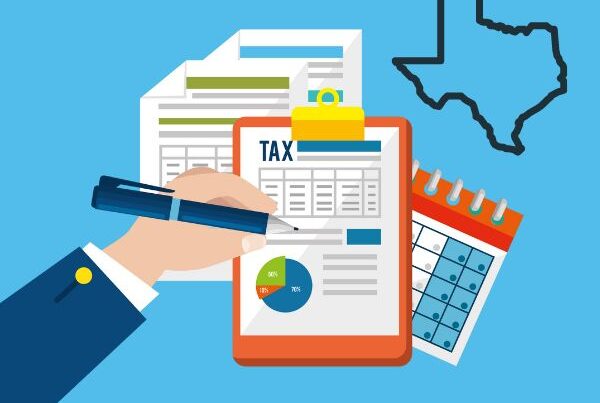
Has your business increased prices lately? Even if you have, it’s time to consider doing so again and continually be evaluating pricing and costs. This is thanks to something we haven’t seen in the United States in decades: inflation. Let’s explore 2021 inflation and what to do about it:
- Why you should consider raising prices
- Next steps you should consider taking
- Analyze your costs to determine the impacts of inflation
- Determine how to adjust prices when inflation is impacting you
Why You Should Consider Raising Prices
Inflation Background
We haven’t seen inflation in this country for decades after an aggressive monetary policy that focused on keeping inflation low. COVID has brought us a lot of things and now it’s bringing inflation. The Federal Reserve (the part of the government that manages monetary policy and interest rates) stated months ago that there would be inflation, but believes it is temporary and is therefore not increasing interest rates to squelch it.
There are other parties like Larry Summers, a former Secretary of the Treasury, who is very concerned, as seen in this Op-Ed in the Washington Post.
Whether short or long term, inflation should not be ignored. Let’s explore how we got here.
How Did We Get to Inflation?
Without being a wonky economist, the reasons we are experiencing inflation come down to a few reasons:
- Supply and Demand – COVID really messed up the supply chain while the change in consumer behavior created increased product demands for certain categories. Now, with improved public health, there is additional demand for products and services that were limited due to COVID.
- Government Spending – The many government-sponsored COVID-relief programs have injected massive amounts of money into many sectors of the economy. This is good to help with the damage from lockdowns but is a setup for overheating the economy.
- Consumer Savings – there was a lot of money saved during COVID by those who weren’t unemployed. Think about it: no commuting, no travel, no vacations. People are ready to spend.
These factors add up to lots of spending on limited supply, resulting in increasing prices.
Inflation Examples
We are seeing price increases in almost every category. Here are some examples:
Bottom line, we are seeing higher prices everywhere and that affects every business.
How Inflation Might be Impacting Your Business
I am going to speak to issues for product-based companies doing ecommerce, but these examples apply broadly.
- Inventory – Commodities are up and those raw materials go into your products. Is your purchase price of inventory higher than 2020 or 2019?
- Shipping and Fulfillment – Fuel is up and hiring is tough despite higher unemployment. Are your costs up compared to previous periods?
- Labor – Are you paying more to hire or retain your employees?
These costs can sneak up on a business, so it’s time to start looking at them closely.
The Danger of Not Increasing Prices
Even a short-term spike in costs can affect your cash flow and bottom line.
Let’s say you have 10% Net Income with 40% Cost of Goods Sold (COGS) as a share of revenue. Now let’s say your COGS increases by 10% due to increased input costs and shipping. Your COGS is now 44% and Net Income is 6%. On a $100,000 revenue per month business, that is a decrease from $10,000 in Net Income to $6,000. What were you doing with that extra $4,000 a month?
Should inflation continue, you could quickly see your margins erode to no profit.
Next Steps
Do I have your attention? If so, there are two key steps you should be taking:
- Analyze your costs to determine the impacts of inflation
- Determine how to adjust prices when inflation is impacting you
Analyze Your Business Costs to Determine the Impact of Inflation
Prices are going up all around us, but how do you know if it is impacting your business?
There are many ways in which inflation may impact your business costs, but like we mentioned earlier, there are 3 you should specifically consider if you are a product-based business:
- Inventory
- Shipping and Fulfillment
- Labor
If you are service-based business, you could simplify this to focus on labor and inventory, if you resell with your services.
Your Financials Will Have The Answers – Eventually
Will your Profit and Loss (P&L) tell you if you are experiencing inflation? Yes, but it may take some time and by the time it does, it may be too late.
Here’s what to look at:
- Gross margin – Is it decreasing over time? Make sure to compare similar periods and note that 2020 is an exception, so you may what to compare to 2019 instead.
- Shipping and fulfillment as a share of income – the income ratio or an expense divided by the revenue is a financial tool used to compare costs across time periods. In this case the ratio or shipping and fulfillment now versus a prior period will show you if those costs are going, down, or staying flat.
- Labor as a share of Income – oftentimes payroll costs may be split across accounts on your P&L, but this ratio can tell you if your labor share is increasing.
For more information on analyzing your P&L, watch this video.
Before you start, though, let me tell you some challenges of this approach.
Why Your P&L Might Not be Enough
The challenges with going off the P&L is that it depends on good accounting and it may take time for the answers to emerge. Here is why:
- Timing: ideally the costs and revenue are related to the same time period. This is a common mistake that we correct for many of our new customers. An income ratio only works when the costs align with the revenues for that period.
- COGS and Inventory: Cost of Goods Sold (COGS) is not your inventory expenses. Let me repeat that one more time, COGS is not inventory. This is one of the most common errors we see with product businesses. The correct way to account for inventory is to put inventory on the balance sheet as an asset, and then decrease the amount as said inventory is sold and recognize it as COGS, along with other related costs at the time of purchase. The issue here is that COGS today is based on inventory purchases from a previous time period. This could be a month ago, three months ago, or six months ago depending on your inventory turns.
- Labor Costs are Diluted: The share of labor may creep up slowly. For example, a new hire costs 10% more than the previous person, but that cost is diluted amongst all the labor costs you have. It will take time for this to really materialize.
Bottom line, you can use your P&L to identify inflation, but it can take months or quarters to really see the impact. Let’s explore some other ways to analyze your costs for inflation.
Inventory and Inflation
The best way to analyze your inventory costs and inflation is to look at the costs of purchasing now versus before. You can use an inventory tool, product cost catalog, or anything that shows the cost of widget A now and before. It’s easy math: SKU 123456 cost $10 in January and now it costs $11 which is a 10% increase. The challenge is if you have a lot of SKUs. That said, spreads and good records are your friends. Do that analysis to see if your inventory costs are increasing.
Now you could analyze each SKU and determine cost differences and then average those amounts. A weighted average would be more valuable where you apply the quantity of SKUs purchased to determine the overall costs between periods.
Shipping / Fulfillment and Inflation
Analyzing shipping and fulfillment can be a bit easier than inventory. What you need to do is normalize the costs to compare across time periods. Income ratios are one way. Another way is to come up with a ratio like dollars per units shipped. Make sure you are comparing apples to apples as not every unit has the same cost.
Labor and Inflation
Assessing labor costs are a bit more challenging due to the dilution effect noted earlier. What usually happens is the newest hirers cost more. Then employees start leaving for better pay or asking for more pay. Over time it starts adding up.
There are 3 things to consider here:
- Labor income ratio: I said this isn’t great, but the trend over time can be telling
- New hire costs: how much are you paying for the same role now versus before? One hire does not show a trend, but there is a trend if you are seeing big jumps in payroll costs hire after hire.
- Market data: the market data can be slow but keep your eye on the business articles and studies on wages. Note that wage trends vary widely by occupation, so dig deep on what your team is doing.
Trends are Better Than Perfection
Getting an accurate assessment of cost increases can take time. Is it better to know your costs are up 5.7% or that they are up 4-8%? Precision is helpful, but the amount of precision is most needed when it comes time for pricing. A good range of impact can be sufficient to make some quick decisions.
Analysis Done – Now What?
Let’s say you’ve done an analysis and you see costs have gone up. Now you have to make the hard decision – if and how much to increase prices.
Adjusting Prices to Respond to Inflation
For the purpose of these article, we are going to assume cost increases of 5% when comparing 2021 to 2019 in your business. Now let’s take action.
To Increase or Not Increase Prices
The first question is do you increase prices? Some may hold prices steady in an effort to retain customer loyalty, increase sales, and hope that costs come back down. Just know that increases in costs will affect profitability. Too many business owners focus on revenue, not profitability. Don’t fall into this trap.
If price increase feel foreign because of our recent low-inflation environment, don’t be fooled. Price increases happen all the time. Take Netflix for example and their pricing from 2010 to 2019. Standard went from $7.99 to $12.99 per month. Note that Standard costs $13.99 per month as of May 2021.
If you’re ready to raise prices, read on. If not, watch your margins closely.
How to Price
Pricing is a dark art. There is no single path to pricing perfection, but there are a many pricing methods. Here are a few:
- Cost adjusted
- Market based
- Elasticity based
Do note that pricing can be very complex. What will be explained is much simpler and might make an economist shudder, but it’s still valid.
Cost-Adjusted Pricing
Cost adjusted pricing is simply saying you are going to mark up your costs to get to a certain price. If you’ve done an inflation analysis and see that your costs are up 5%, you could simply raise prices 5% to maintain margins. This is a bit old school, but it works.
Market-Based Pricing
This is a better methodology where you compare the cost of your item to others and decide to price the same, higher or lower. This can be problematic as:
- You must make sure you are comparing similar products. This is easy for resellers, harder for direct-to-consumer product companies with unique products.
- Changing environments create price instability. If company A raises prices and company B has not, is it an accurate comparison? What if those price changes happen rapidly and at different times?
- Alternatives – Often the comparison of a price is very different – Netflix versus going to the movies. Going to the movies versus buying premium access on Disney+. Not the same thing, but similar.
Issues aside, it’s good to keep your eye on competitor pricing as you make decisions.
Elasticity-Based Pricing
Elasticity is a somewhat complex concept, so let’s refer to Wikipedia
A good’s price elasticity of demand is a measure of how sensitive the quantity demanded of it is to its price. When the price rises, quantity demanded falls for almost any good, but it falls more for some than for others. The price elasticity gives the percentage change in quantity demanded when there is a one percent increase in price, holding everything else constant.
Another way to think of elasticity is that there are 100 potential customers. Different prices will determine how many customers would be willing to pay.
The cheaper the price, the higher the quantity of sales. The higher the price, the better the profit per unit. Ideally, you optimize for overall profit, which is somewhere in the middle.
There are many tools and MBAs who know how to do elasticity analysis and tell you what the optimal price is.
Just note that elasticity will change in a changing market. $10 per widget may be a lot today, but not so much in a year. When a market is fluid, elasticity should be measured regularly.
Making a Decision
Cost adjusted, market, and elasticity pricing are just three methods. Sometimes the best approach is taking a number of approaches. Markets aren’t always elastic, markets aren’t always consistent, and cost-based pricing, while safe, can leave money on the table.
Here’s a recommendation:
- Analyze using 1 or more methods
- Make a decision
- Measure the results paying attention to margins more than revenues
Pricing is a pain, but a pain all businesses should be considering on a regular basis, and more frequently during an inflationary environment. If you aren’t careful, business inflation will seriously impact your profitability.





